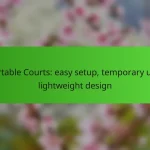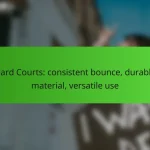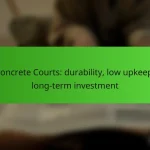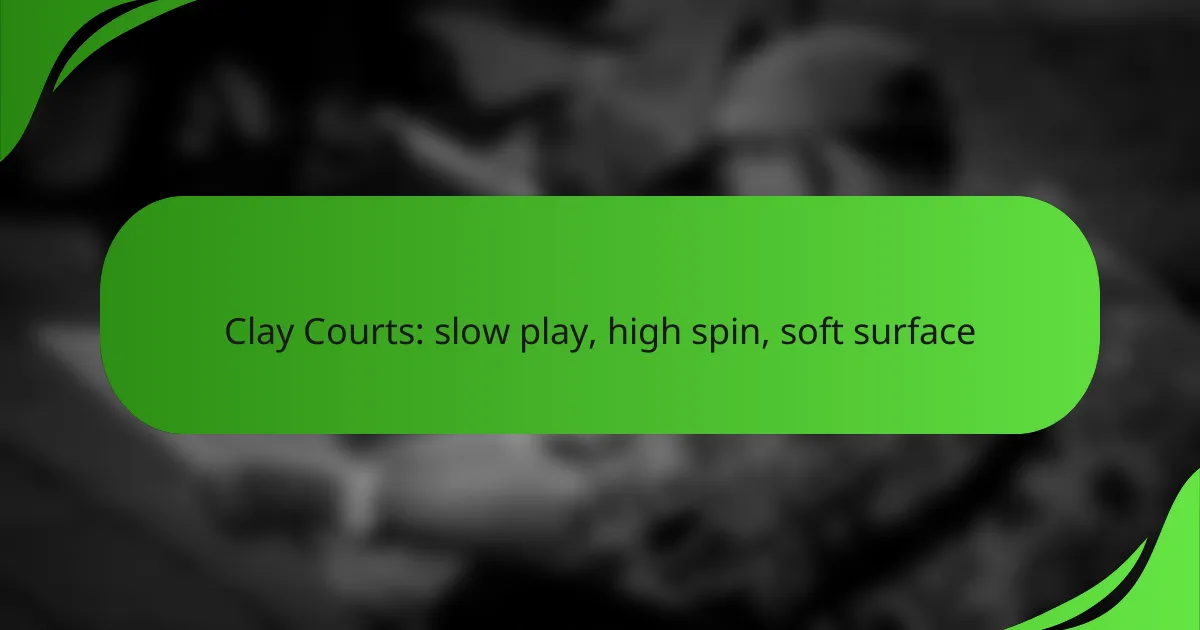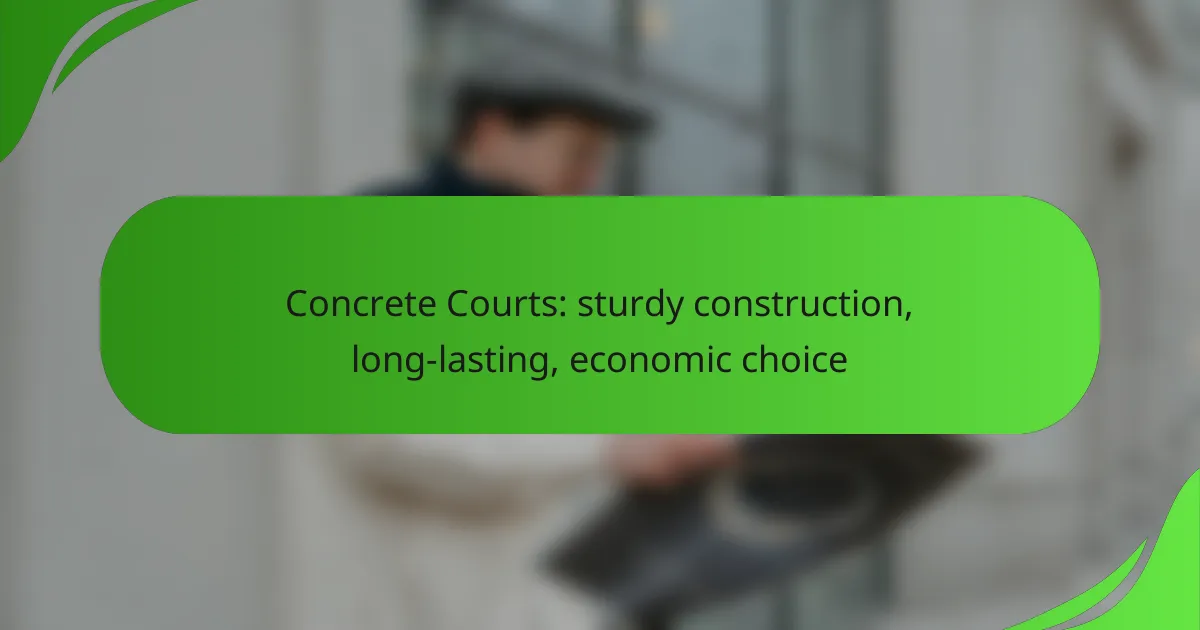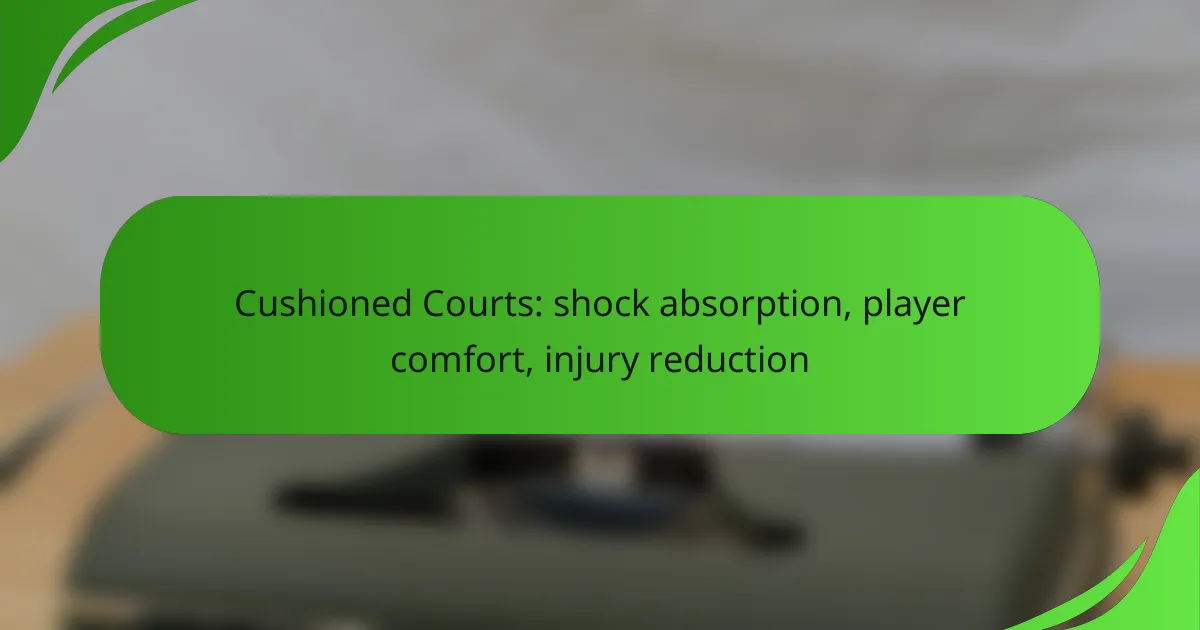Clay courts are characterized by their slow play, high spin potential, and soft surface, which create a distinct playing experience in tennis. The unique texture of crushed stone, brick, or tile not only affects the speed of the game but also encourages players to adapt their strategies, often favoring those skilled in constructing points and utilizing spin effectively.

How do clay courts affect player performance?
Clay courts significantly influence player performance by slowing down the game and increasing the bounce of the ball. This surface requires players to adapt their strategies, often favoring those who excel in constructing points and utilizing spin.
Slow play benefits strategic players
The slower pace of clay courts allows strategic players to set up their shots more effectively. Players can take their time to construct points, focusing on placement and shot selection rather than sheer power. This can be particularly advantageous for those who excel in tactical play and can outmaneuver their opponents.
For example, a player who excels in constructing rallies can exploit the slower surface to draw their opponent into longer exchanges, ultimately wearing them down. This contrasts with faster surfaces, where quick reflexes and power often dominate the game.
High spin advantages for topspin hitters
Clay courts enhance the effectiveness of topspin shots, allowing players to hit with greater spin and control. The soft surface grips the ball, resulting in higher bounces that can disrupt an opponent’s rhythm. This characteristic is particularly beneficial for players who rely on topspin to dictate play.
Topspin hitters can use this to their advantage by pushing their opponents back and forcing them into uncomfortable positions. Players like Rafael Nadal have famously thrived on clay due to their ability to generate heavy topspin, making it difficult for opponents to return shots effectively.
Soft surface reduces injury risk
The soft surface of clay courts provides better shock absorption compared to harder surfaces, which can help reduce the risk of injuries. Players often experience less stress on their joints, particularly the knees and ankles, making clay a safer option for long matches.
This cushioning effect allows players to move more freely and recover from shots with less impact on their bodies. However, it’s still essential for players to maintain proper conditioning and warm-up routines to minimize injury risk, regardless of the surface they play on.
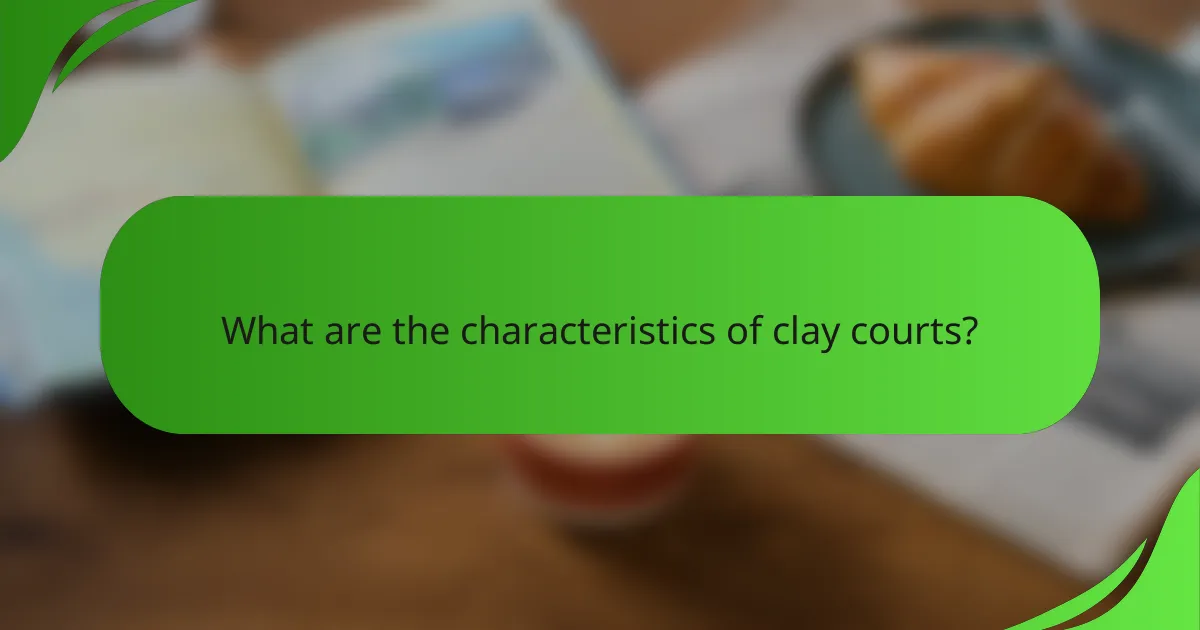
What are the characteristics of clay courts?
Clay courts are defined by their slow play, high spin potential, and soft surface, which significantly impact the style of tennis played on them. These courts are made from crushed stone, brick, or tile, providing a unique playing experience compared to grass or hard courts.
Surface composition and texture
Clay courts are primarily composed of crushed brick, stone, or a mix of both, giving them a distinctive red or green hue. The texture allows for a softer landing, reducing the risk of injury, while also enabling players to generate high spin on their shots.
The surface can vary in moisture content, affecting play speed; wetter clay slows the ball down further, while drier clay can speed up play slightly. Players often need to adjust their strategies based on these conditions.
Typical court dimensions
A standard clay court measures 23.77 meters long and 10.97 meters wide for singles matches, with doubles courts extending to 8.23 meters in width. The service boxes are 6.40 meters long, and the net height is 0.914 meters at the center.
These dimensions align with international tennis regulations, ensuring consistency across tournaments. Players should familiarize themselves with the court layout to optimize their positioning and shot selection.
Maintenance requirements
Clay courts require regular maintenance to keep the surface in optimal condition. This includes daily sweeping to remove debris, periodic watering to maintain moisture, and regular rolling to ensure a smooth playing surface.
Players should be aware that maintenance can affect playability; poorly maintained courts may lead to inconsistent bounces and slower play. Scheduling matches around maintenance routines can help ensure better playing conditions.
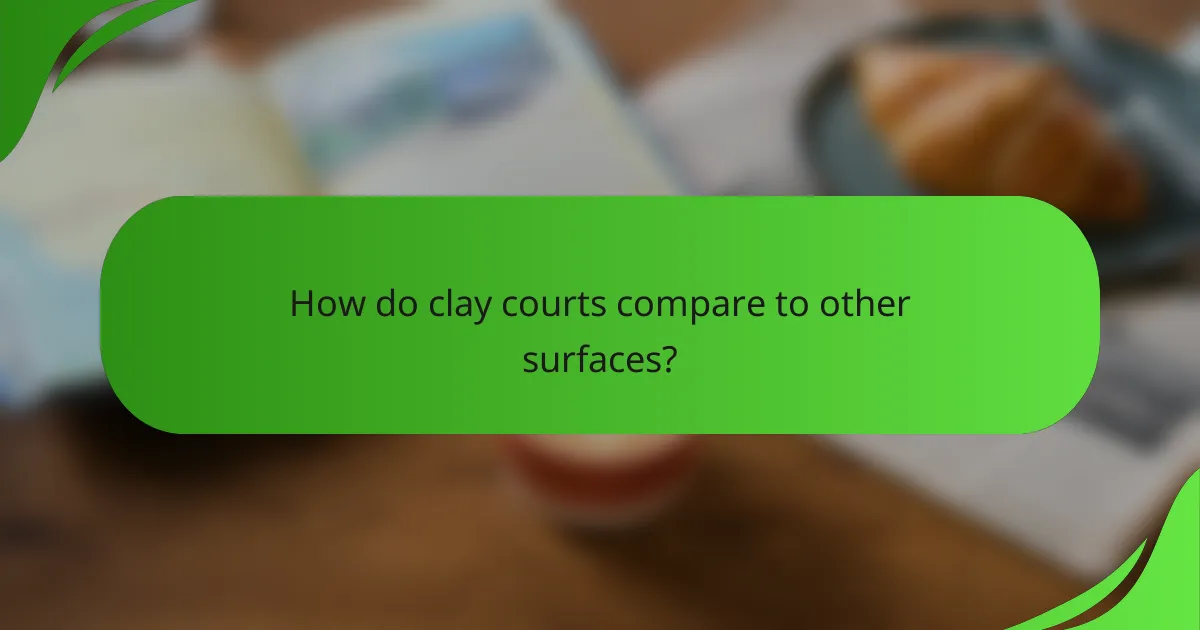
How do clay courts compare to other surfaces?
Clay courts differ from other surfaces primarily in their slow play, high spin potential, and softer texture. These characteristics significantly affect gameplay, player strategy, and match outcomes compared to grass and hard courts.
Comparison with grass courts
Clay courts are much slower than grass courts, which allows players more time to react and set up their shots. Grass courts typically favor serve-and-volley players due to their fast surface, while clay courts benefit baseline players who can utilize spin and placement. The softer surface of clay also reduces the risk of injury, making it a popular choice for longer matches.
Comparison with hard courts
Hard courts provide a medium pace between clay and grass, offering a balance of speed and control. Unlike the high bounce and slower pace of clay, hard courts allow for quicker rallies and more aggressive play. Players on hard courts must adapt their strategies, often relying on powerful serves and quick footwork, whereas clay players can focus on constructing points with spin and placement.
Impact on playing style
The unique characteristics of clay courts encourage a more strategic and patient playing style. Players often engage in longer rallies, using topspin to control the ball’s trajectory and placement. It’s essential for players to develop strong defensive skills and stamina, as matches on clay can last significantly longer than those on faster surfaces.
Additionally, players should practice sliding on clay to maintain balance and control. Understanding how to effectively use the surface can give players a competitive edge, particularly in major tournaments where clay is prevalent, such as the French Open.
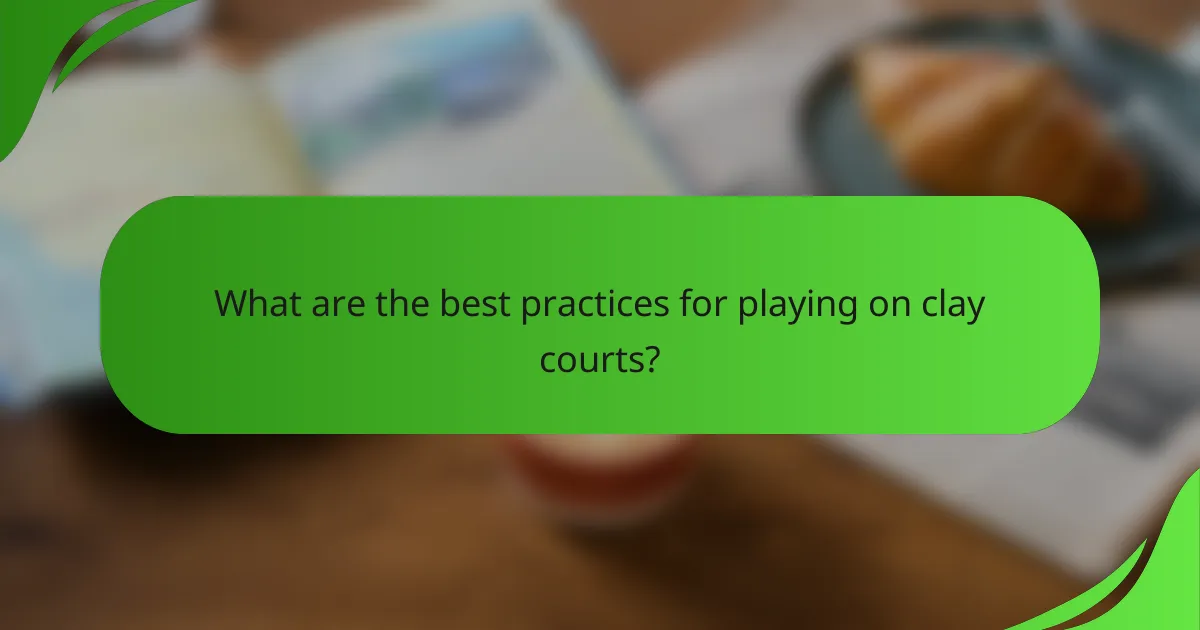
What are the best practices for playing on clay courts?
To excel on clay courts, players should focus on specific footwear, optimal techniques, and effective warm-up routines. These practices help adapt to the unique characteristics of clay, such as slower play and higher spin potential.
Footwear recommendations
Choosing the right footwear is crucial for playing on clay courts. Look for shoes with a herringbone or multi-directional tread pattern, which provides better traction on the soft surface. Ensure that the shoes are lightweight and offer adequate support to prevent injuries.
Consider shoes specifically designed for clay, as they often have a smoother sole to minimize clay buildup. Brands like Nike, Adidas, and Asics offer models tailored for this surface, ensuring optimal performance and comfort.
Optimal playing techniques
On clay, players should adopt a more patient and strategic approach. Focus on constructing points rather than going for quick winners, as the slower surface allows for longer rallies. Utilize topspin shots to keep the ball in play and push your opponent back.
Footwork is essential; practice sliding into your shots to maintain balance and positioning. This technique not only helps in reaching the ball but also allows for better shot execution, leveraging the high bounce of the clay.
Warm-up routines for clay
A proper warm-up is vital for preparing your body for the demands of clay court play. Start with dynamic stretches to loosen your muscles, followed by light jogging or skipping to increase your heart rate. Focus on movements that mimic the lateral and sliding actions you’ll encounter during matches.
Incorporate drills that emphasize footwork and shot placement, such as hitting groundstrokes with a partner. This not only helps in getting accustomed to the surface but also builds rhythm and confidence before the match begins.

What are the top clay court tournaments in the UK?
The top clay court tournaments in the UK include the prestigious Nottingham Open and the Surbiton Trophy. These events attract both emerging talents and seasoned professionals, providing a competitive platform on the slower, high-spin surfaces that clay courts are known for.
French Open overview
The French Open, also known as Roland Garros, is the premier clay court tournament globally, held annually in Paris. It is the only Grand Slam event played on clay, featuring a unique blend of slow play and high spin that challenges players’ skills and endurance.
Players must adapt to the soft surface, which can significantly affect match dynamics. The tournament typically takes place from late May to early June, drawing large crowds and offering substantial prize money, often in the millions of euros.
ATP events on clay
ATP events on clay include a series of tournaments leading up to the French Open, such as the Monte-Carlo Masters and the Italian Open. These events are crucial for players to gain experience on clay and improve their rankings.
During the clay season, players often face challenges like longer rallies and the need for strategic shot placement. Competing in these tournaments can help players develop their game on this slower surface, which is essential for success at the French Open.
